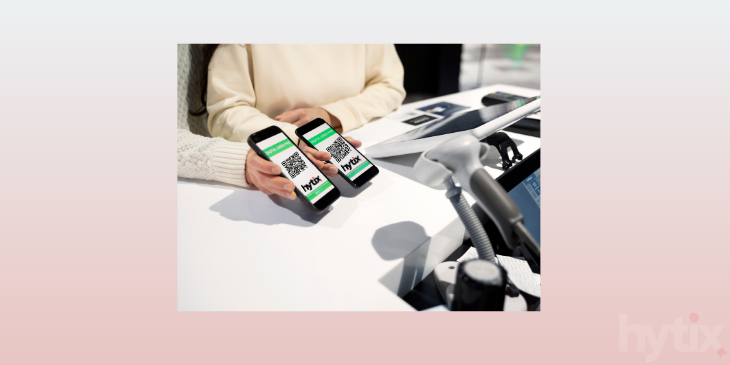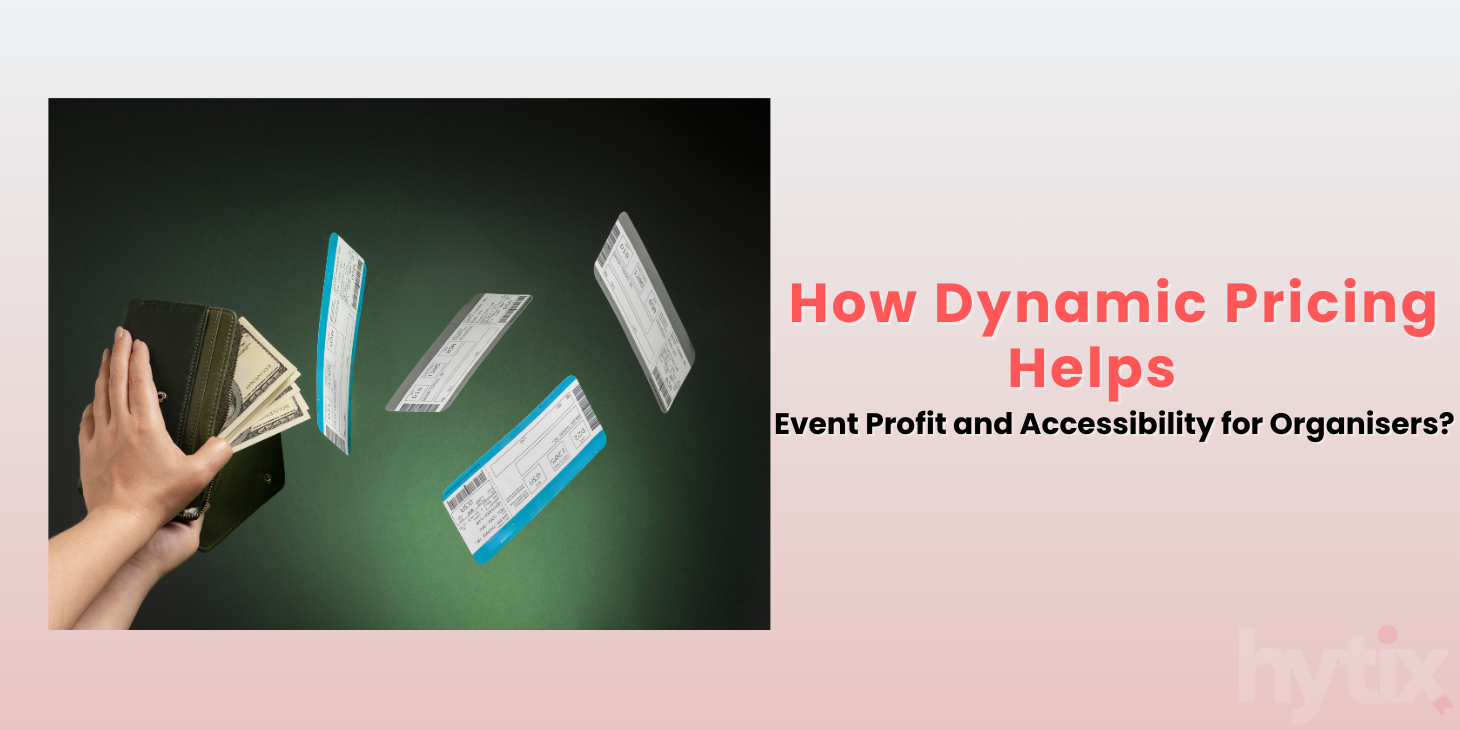Contents
- 1 What is Dynamic Ticket Pricing?
- 2 How Dynamic Pricing Works
- 3 Examples of Dynamic Pricing in Events
- 4 Key Strategies for Dynamic Pricing
- 5 Benefits of Dynamic Pricing
- 6 Challenges of Dynamic Pricing
- 7 What is the Best Ticket Website for Dynamic Pricing?
- 8 Dynamic Pricing vs Variable Pricing
- 9 How Dynamic Pricing Helps Flip Tickets and Mitigates Ticket Brokers
Event organisers face a challenging dilemma when determining ticket prices. Pricing too low may leave money on the table, while pricing too high risks alienating potential attendees. This is where dynamic pricing shines. It allows event organisers to adjust ticket prices based on demand, time, and other variables, creating a balance between maximising revenue and ensuring accessibility.
Dynamic pricing has revolutionised industries like airlines and hotels, and it’s now making waves in the world of event ticketing. This post explores dynamic pricing for events, its key strategies, benefits, challenges, and actionable tips for organisers.
What is Dynamic Ticket Pricing?
Dynamic ticket pricing is a strategy where ticket prices fluctuate based on real-time factors like demand, inventory, and timing. Unlike fixed pricing models, where all tickets are sold at the same price, dynamic pricing allows for flexibility. For example:
- A concert offering early bird pricing at $50 may increase the ticket price to $100 as the event draws near.
- A festival might charge more for popular weekend days and offer weekday discounts to fill up slower time slots.
This approach enables organisers to boost ticket sales, revenue and keep events accessible to a broader audience.
How Dynamic Pricing Works
Dynamic pricing relies on data analytics and algorithms that monitor:
- Real-time demand: Ticket sales activity can indicate whether prices should rise or fall.
- Buying patterns: Historical sales data helps predict customer behaviour.
- Market trends: Competitor pricing and other external factors influence optimal pricing.
- Inventory levels: Prices can increase as tickets sell out to encourage early purchases.
Examples of Dynamic Pricing in Events
Here are some real-life applications of dynamic ticket pricing in events:
Concerts:
Big music tours often use dynamic pricing to capitalise on high demand. For instance, artists like Taylor Swift implement dynamic pricing to charge premium prices for VIP packages and top-tier seats during peak ticket sales.
Sporting Events:
Sports teams use variable pricing vs. dynamic pricing depending on opponents and schedules. Games against top teams or playoff contenders typically see higher prices compared to mid-season games with less buzz.
Festivals:
Major festivals like Coachella and Glastonbury employ pricing tiers. Early bird tickets for die-hard fans are sold at a discount, with prices rising for later waves as tickets become scarce.
Theatre Performances:
Broadway shows adjust ticket pricing based on time slots, holidays, and seating sections, aligning ticket affordability with demand.
Key Strategies for Dynamic Pricing
1. Demand-Based Flexibility:
Demand-based pricing adjusts ticket prices according to ticket sales volume. When demand is high, prices rise; if sales dip, prices are lowered to attract buyers. For example:
- Early bird discounts for the first batch of tickets.
- Incremental price hikes as inventory depletes (e.g., the first 100 tickets cost $20, the next 100 cost $30, and so on).
2. Time-Based Pricing:
This strategy increases ticket prices as the event date approaches. It incentivises early buyers while ensuring last-minute sales generate higher revenue. For example:
- Day-of-show tickets cost more than pre-sale tickets.
- Holiday-specific ticketing offering premium pricing (e.g., New Year’s Eve events).
3. Tiered Options:
Offering multiple ticket types (e.g., general admission, VIP, or ultra-VIP) allows for targeting various audience segments. For example:
- VIP packages might include backstage access or unlimited drinks, justifying premium pricing.
- Tiered ticketing ensures accessibility for budget-conscious attendees while maximising revenue from those willing to pay extra.
4. Surge Pricing:
Also known as “peak pricing,” this approach charges a premium during high-demand hours or days. For instance:
- Selling haunted house tickets at a higher price for nighttime slots compared to afternoon ones.
- Charging more for Saturday or Sunday access compared to weekdays.
Benefits of Dynamic Pricing
When implemented effectively, dynamic pricing offers numerous advantages for event organisers and attendees alike.
- Maximized Revenue
Dynamic pricing helps you capitalise on high-demand moments, extracting the most value from attendees willing to pay premium prices.
- Optimized Attendance
Prices can be adjusted to fill seats during low-demand periods, ensuring optimal attendance throughout the event. - Early Ticket Sales
By incentivising early purchases with discounted pricing, organisers can secure revenue well in advance of the event. - Improved Customer Options
Dynamic pricing gives attendees the freedom to choose ticket types and prices based on their preferences and budgets. - Better Competitiveness
By adapting quickly to market demand, dynamic pricing ensures your events stay competitive in a crowded industry.
Challenges of Dynamic Pricing
Though dynamic pricing provides significant benefits, there are some challenges organisers need to address carefully.
- Customer Perception Issues
Attendees may view dynamic pricing as unfair or manipulative, especially if they find out someone paid less for the same ticket. Transparency is critical to mitigate backlash. - Complex Implementation
Managing dynamic pricing requires sophisticated ticketing platforms with algorithm support and real-time adjustments.
- Price Wars
Competitors may counter your pricing strategies with aggressive discounts, potentially leading to price wars that hurt profitability.
How to Address Challenges
Transparent Communication
Clearly explain dynamic pricing on your ticketing platform and marketing materials. Highlight the urgency to purchase early without making attendees feel exploited.
Use Technology
Leverage robust ticketing systems like Hytix or tools with dynamic pricing solutions for efficient implementation.
Limit Price Surges
Avoid extreme price hikes and set clear price caps to maintain customer trust.

What is the Best Ticket Website for Dynamic Pricing?
Not all ticketing platforms support dynamic pricing effectively. Look for systems that offer:
- Robust analytics and real-time adjustments (e.g., Hytix).
- User-friendly interfaces for buyers and organisers alike (e.g., Hytix).
- Customizable price tiers and demand-based pricing capabilities (e.g., Hytix).
If you want to customise dynamic pricing, Hytix is the best ticketing platform to offer customised Dynamic pricing rules on tickets with multiple options, such as rule-based pricing and Custom pricing.
Rule-based dynamic pricing
At Hytix, we empower event organisers with an AI-enabled ticketing feature of dynamic pricing that automatically adjusts ticket prices based on real-time factors like sales volume, purchase date, and event proximity. Here’s a quick breakdown:
1. Ticket quantity based: want to reward early birds and create urgency as tickets sell out? This rule will allow you to automatically set a specific price or increase/decrease the current price when a certain quantity or percentage of tickets is sold.
2. Date based: where you can set specific price points based on when the ticket is purchased. This is great for early bird discounts or time-limited promotions.
3. Day based: want to adjust pricing based on the day of the week? With day-based rules, you can change ticket prices depending on whether it’s a weekday or a weekend.
4. Proximity-to-Event Pricing (Number of Days Within Schedule Date): This rule allows you to automatically adjust ticket prices based on how many days remain before the event and when a customer makes the purchase.
Custom dynamic pricing
With custom pricing event organizers can customize ticket price and quantities for any specific ticket types for a specific date and time slots. This gives you full control to align pricing with demand, peak hours, or special moments during your event.
Dynamic Pricing vs Variable Pricing
While these terms are often used interchangeably, they have subtle differences:
- Dynamic Pricing involves real-time adjustments based on demand and availability (e.g., surge pricing).
- Variable Pricing is static and predetermined, with distinct price tiers based on time or customer demographics.
For instance, a concert may use variable pricing to offer general admission at $50 and VIP at $150, but deploy dynamic pricing to increase those rates as tickets sell out.
How Dynamic Pricing Helps Flip Tickets and Mitigates Ticket Brokers
Ticket flipping, where scalpers resell tickets at exorbitant prices, often affects high-demand events. Dynamic pricing reduces flipping by:
- Pricing tickets closer to their secondary market value, leaving less opportunity for brokers to profit.
- Offering tiered options and surge pricing, ensuring buyers can get tickets directly from organisers.
Actionable Dynamic Pricing Tips for Event Organizers
- Start small. Test dynamic pricing on smaller events before rolling it out widely.
- Promote early bird discounts to encourage upfront purchases.
- Regularly monitor competitor pricing for market alignment.
- Use analytics to refine pricing strategies after each event.
Transform Ticket Pricing for Your Next Event
Dynamic pricing is no longer just an advanced trick for airlines or hotels; it’s an essential strategy for event organisers looking to optimise revenue and improve accessibility. When executed thoughtfully, it drives early sales, balances demand and ensures attendees of all budgets can enjoy your events.
Start leveraging the power of dynamic pricing today with innovative ticketing solutions like Hytix. Your next sold-out event is just a few pricing strategies away.
